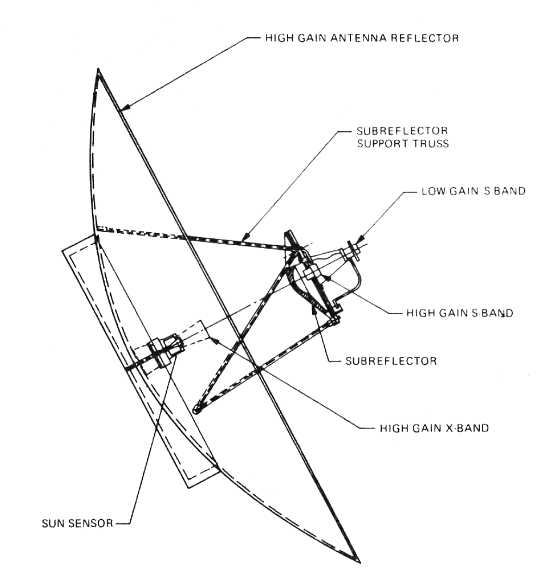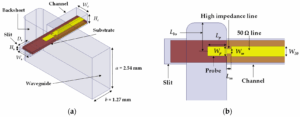Table of Contents
use
Transmitting antennas are used in radio stations, TV signal towers and mobile communication base stations. The transmitting antennas of FM radio stations operate in the 88 to 108 MHz band, and the transmitting power can reach 5,000 watts or more. This power can cover a radius of about 80 kilometers, ensuring that users within this range can clearly receive the signal. The transmitting antenna power of the mobile communication base station is between 20 watts and 100 watts according to the need to cover the area, and the base station power is larger in the suburbs or rural areas, and the power is smaller in the city because the base station is dense.
The receiving antenna of a home TV can receive signals from TV towers a few kilometers away to tens of kilometers away. In the case of digital television, the user uses a receiving antenna with a sensitivity between 25 and 35 dBi, and such an antenna can receive electromagnetic waves in the signal strength range of 1μV to 50μV. The price of the home receiving antenna is generally from 200 yuan to 600 yuan.

Power handling capacity
The transmit antennas used for medium wave broadcasting have a power of up to 50 kilowatts, and the small transmit antennas used for home use have a power of only a few tens of watts, such as the transmit antennas used by Wi-Fi routers between 0.1 watts and 1 watt. The router’s antenna design is also optimized for different frequency bands, such as the 2.4 GHz band, which is suitable for a larger range of coverage, and the 5 GHz band, which has a higher data transfer rate.
The signal power of the satellite TV receiving antenna can be processed between -50 dBm and -20 dBm, and the sensitivity of the satellite antenna with a diameter of 1.8 meters can reach more than 45 dBi.
Commonly used transmitting antenna materials include copper and aluminum alloy, copper wire conductivity of 5.96 × 10^7 S/m, much higher than other common materials. A high-power transmitting antenna for a radio station can cost hundreds of thousands of yuan, and its life span is 10 to 15 years.
A standard outdoor receiving antenna can last eight to 12 years, and the price ranges from 300 yuan to 1,000 yuan, depending on the antenna’s specifications and material. The life of the indoor receiving antenna is generally 5 to 8 years, and the price is relatively low between 100 and 300 yuan.
The installation cost of the transmitter antenna of the radio station can be as high as hundreds of thousands or even millions of yuan, and the power of the transmitting antenna may need to be more than 30% higher than that of the plain area to overcome the obstacles of the terrain. Maintenance costs need to be tens of thousands of dollars per year for regular inspections, equipment calibration and replacement of damaged parts.
The installation cost of the satellite TV receiving antenna ranges from 500 yuan to 2,000 yuan, depending on the installation location and the difficulty of receiving the signal. Maintenance costs are cheaper, and home users generally only need to adjust the direction of the antenna every few years, at a cost of about $100 to $200.

Design considerations
A typical AM broadcast transmitting antenna uses a vertically polarized omnidirectional antenna, and for AM radio stations with a power of more than 10 kW, the antenna height is between 100 and 200 meters. The antenna height needs to be a quarter of the wavelength of the signal to ensure efficient transmission. When operating in the 1000 kHz band, the antenna height is about 75 meters.
Ultra-high frequency (UHF) TV signal transmitting antennas are typically designed with array antennas, which can focus transmitting power in a specific direction to increase signal strength and reduce energy loss in other directions. UHF TV antennas transmit power between 5 kW and 20 kW, and the size of the antenna array varies according to the specific coverage needs, and the antenna array length of some large urban TV towers can exceed 50 meters.
High-frequency signals (such as FM radio and television signals) require relatively short antennas such as FM radio with a frequency range of 88 to 108 MHz and a wavelength of about 3 to 4 meters, so the typical length of an antenna is a quarter or half a wavelength, that is, between 0.75 meters and 2 meters. Low-frequency signal transmission antenna sizes such as long-wave broadcast antennas operate in the frequency range of 30 to 300 kHz, with wavelengths between 1 km and 10 km.
Taking the home TV receiving antenna as an example, the TV signal in the UHF band (470 to 862 MHz) uses an antenna wavelength of 30 to 60 cm, so the size of the receiving antenna is between 10 cm and 30 cm. The satellite TV receiving antenna operates in the frequency band above 10 GHz, and the diameter of the receiver dish ranges from 60 cm to 1.8 m, depending on the power of the satellite signal and the geographical location of the receiving point.
The transmitting antenna uses copper or aluminum as the main material, and copper has an electrical conductivity of about 5.96 × 10^7 S/m, one of the highest among common metals. Although the conductivity of aluminum is only 2.38 × 10^7 S/m, it is still a common material for high-frequency transmitting antennas because of its light weight and corrosion resistance. For high-power 50 kW short-wave transmitting stations, the heat dissipation performance of the antenna material is very important and needs to be controlled by air cooling or liquid cooling systems.
The towers and antennas must be designed to withstand winds of more than 200 kilometers per hour. According to industry standards, an efficient transmitting antenna needs to be able to maintain stable performance for 20 to 30 years, and maintenance costs account for 10% to 15% of the cost of equipment, common antennas have anti-radio interference and electromagnetic shielding functions, and the price ranges from 100 yuan to 300 yuan.
Antenna gain
Antenna gain is an important measure of an antenna’s ability to direct radiation or receive electromagnetic waves, and is expressed in dBi (gain relative to an isotropic antenna) or dBd (gain relative to a dipole antenna). A typical omni-transmitting antenna has a gain of 3 dBi, which means that it can focus the signal horizontally and increase the strength of the signal compared to an isotropic antenna. High-gain directional antennas can focus energy in a specific direction, with gains of 10 dBi to 20 dBi possible. Some high-gain transmitting antennas for Wi-Fi have gains of up to 12 dBi and can cover distances of hundreds of meters.
In the field of broadcasting, a typical FM broadcast transmit antenna typically has a gain of 10 dBi, which ensures signal coverage in the radius of 50 km to 100 km, depending on the transmit power. In the case of a radio station transmitting 5,000 watts, an antenna with 10 dBi gain can maintain signal quality over long distances. In mobile communication base stations, the gain of the transmitting antenna is usually between 14 dBi and 18 dBi. Such high-gain antennas can achieve accurate coverage in the city, improving the stability and efficiency of communication. Taking a typical urban base station as an example, a base station with a transmitting power of 50 watts has an antenna gain of 16 dBi, which can cover a radius of several kilometers.
A typical satellite receiving antenna has a gain of 30 dBi to 45 dBi, and the higher the gain, the stronger the received signal and the higher the clarity of the signal. In Europe, a 1.2-meter diameter satellite receiving antenna has a gain of between 38 dBi and 40 dBi, which ensures that the signal attenuation is kept within acceptable limits even in bad weather. If the gain of the receiving antenna is less than 30 dBi, it may not receive a clear TV signal in stormy weather.
For home digital TV receiving antennas, the gain is between 15 dBi and 25 dBi. A market price of 200 yuan digital TV receiving antenna, gain 20 dBi, can receive TV signals tens of kilometers away. The gain of 25 dBi antenna, the price is about 500 yuan, suitable for users living in remote areas.
Omnidirectional antennas that cover a wide area usually have a low gain, with a typical omnidirectional antenna gain of 2 dBi to 5 dBi, which is suitable for scenarios that require simultaneous coverage of signals in multiple directions, such as home Wi-Fi routers. A Wi-Fi antenna with a 2 dBi gain can cover a radius of about 30 meters, while a 5 dBi gain antenna can extend to 50 meters or more. Many high-performance routers use antennas with 5 dBi to 9 dBi gain to ensure coverage of the entire house and yard.
Directional antennas increase coverage by focusing signals in one direction. Take the common parabolic directional antenna as an example, its gain is usually above 20 dBi, and it is able to cover a distance of several kilometers or more. Some directional antennas used for long-distance Wi-Fi transmissions can gain up to 24 dBi, allowing for several kilometers of signal transmission over empty areas. In telecommunication or radio communication, high-gain directional antennas are particularly common. Some antennas used in military or space communications, for example, can achieve gains of 30 dBi to 40 dBi, and can effectively transmit signals for hundreds of kilometers, ensuring that strong signal feedback can still be received in extreme environments.







